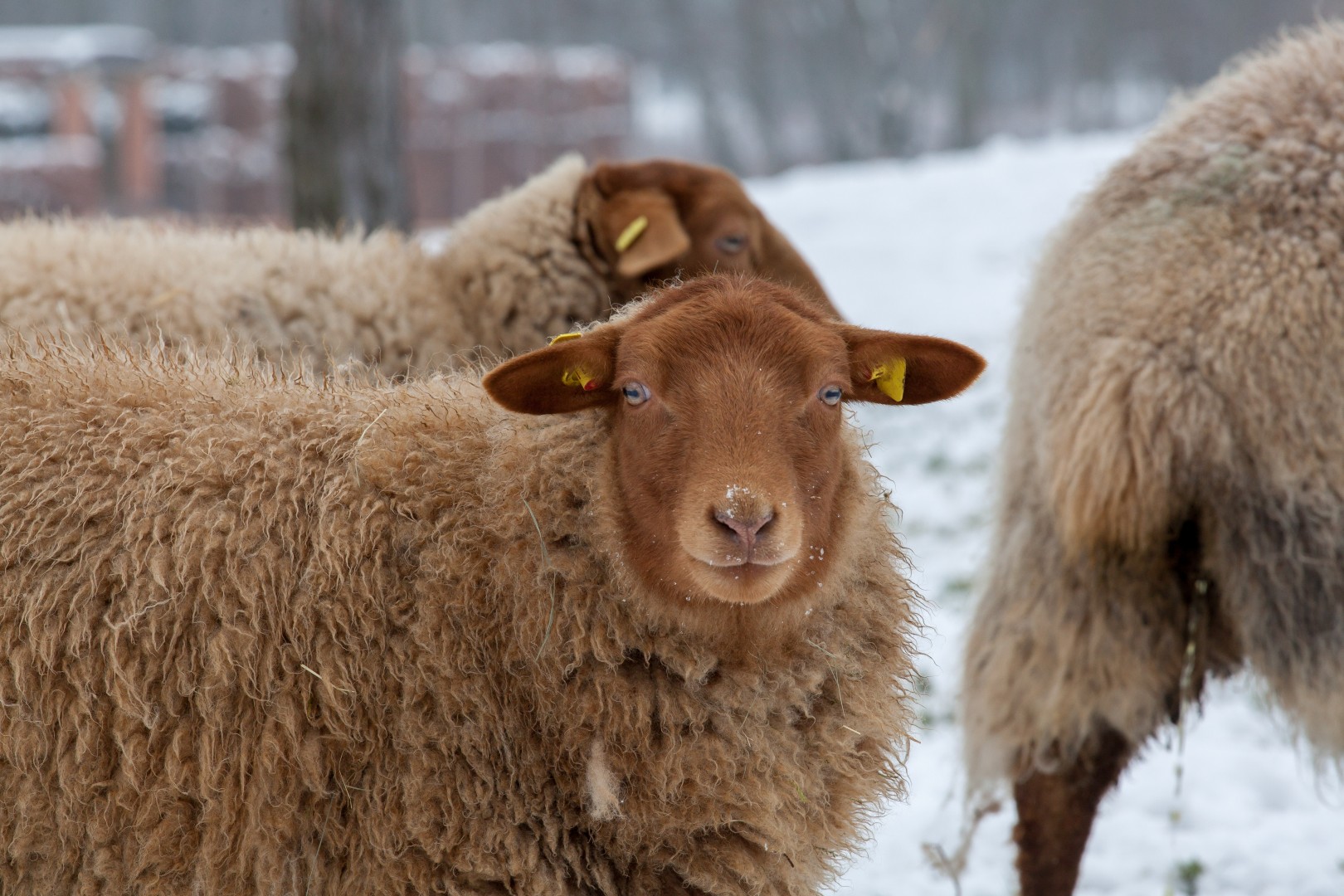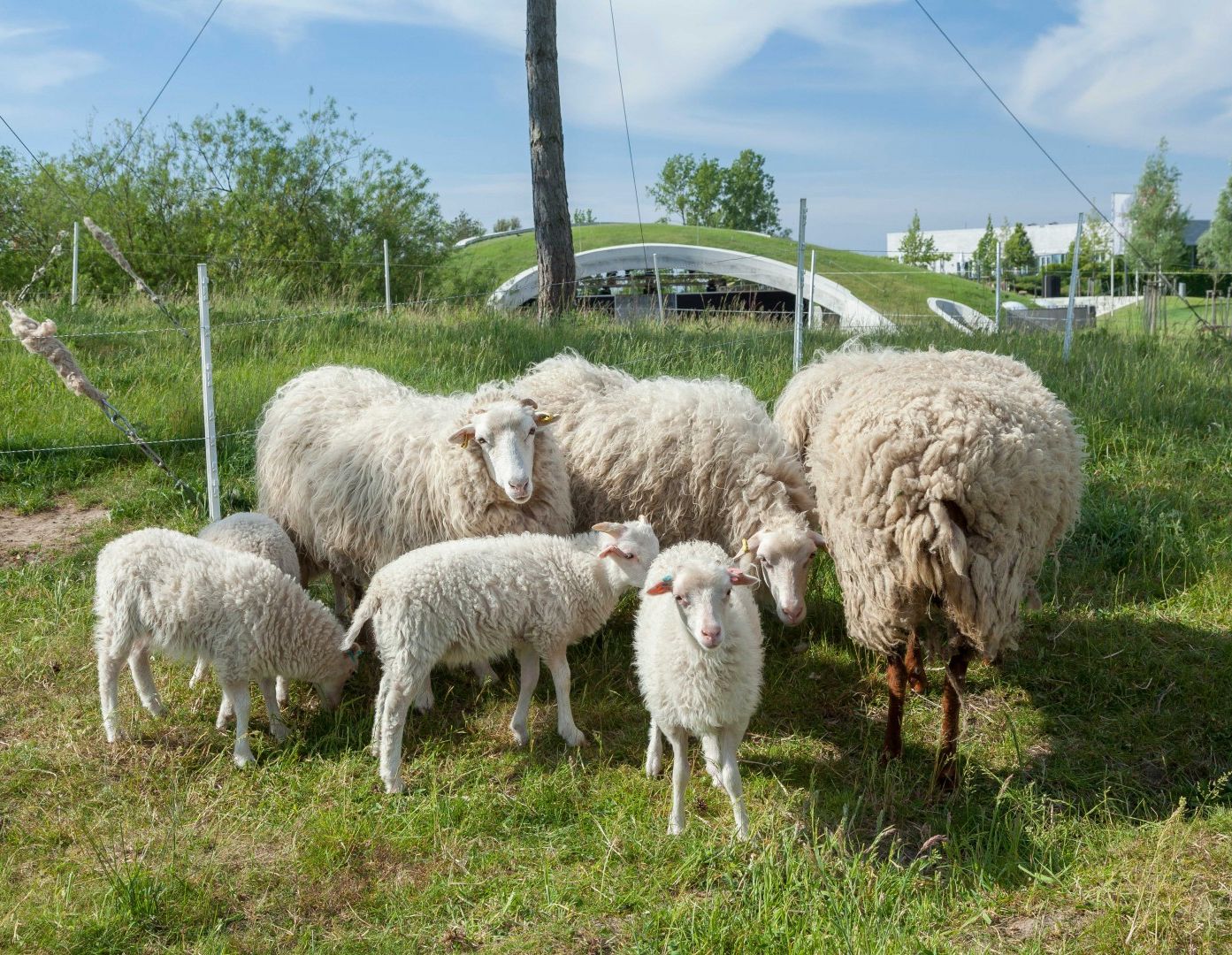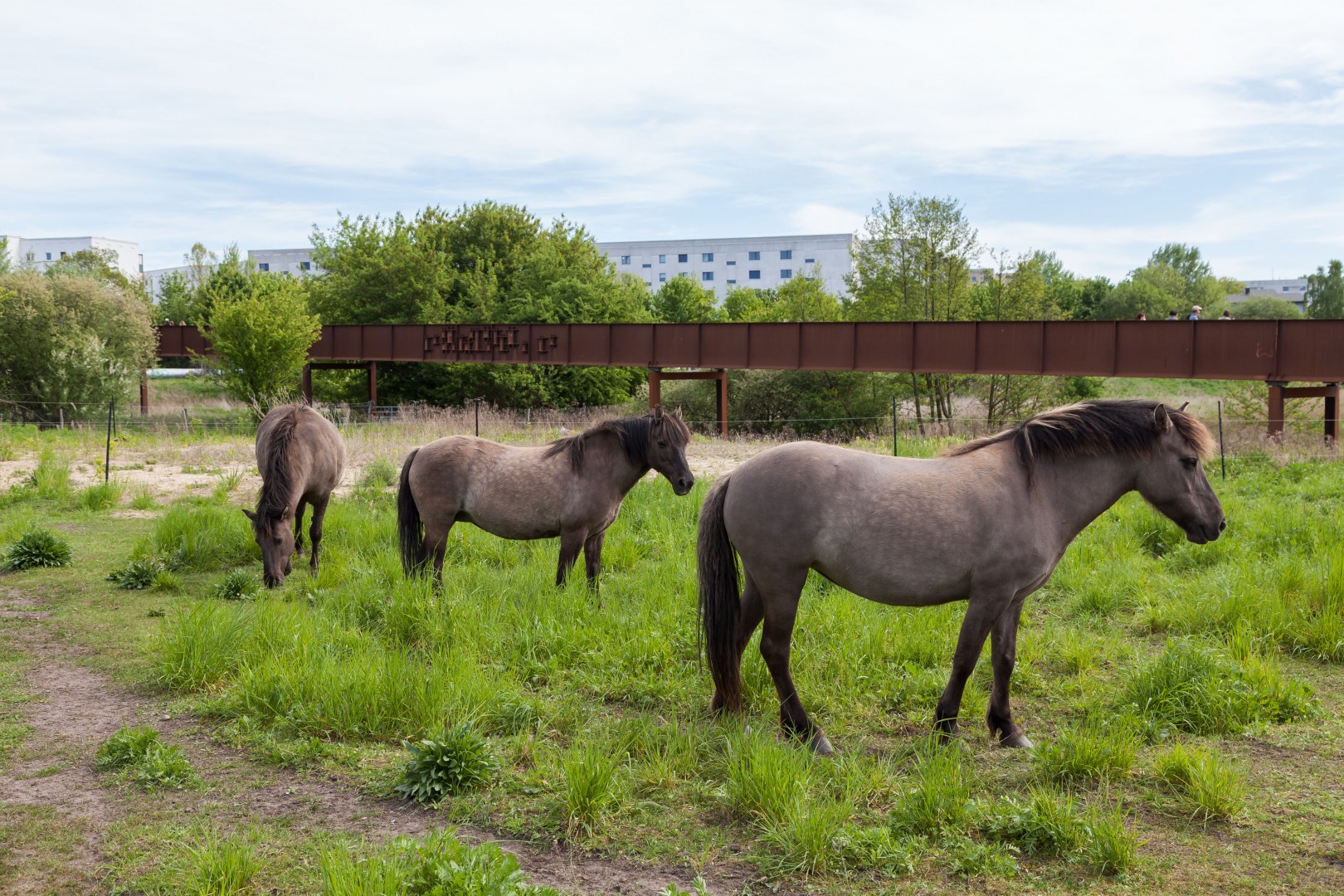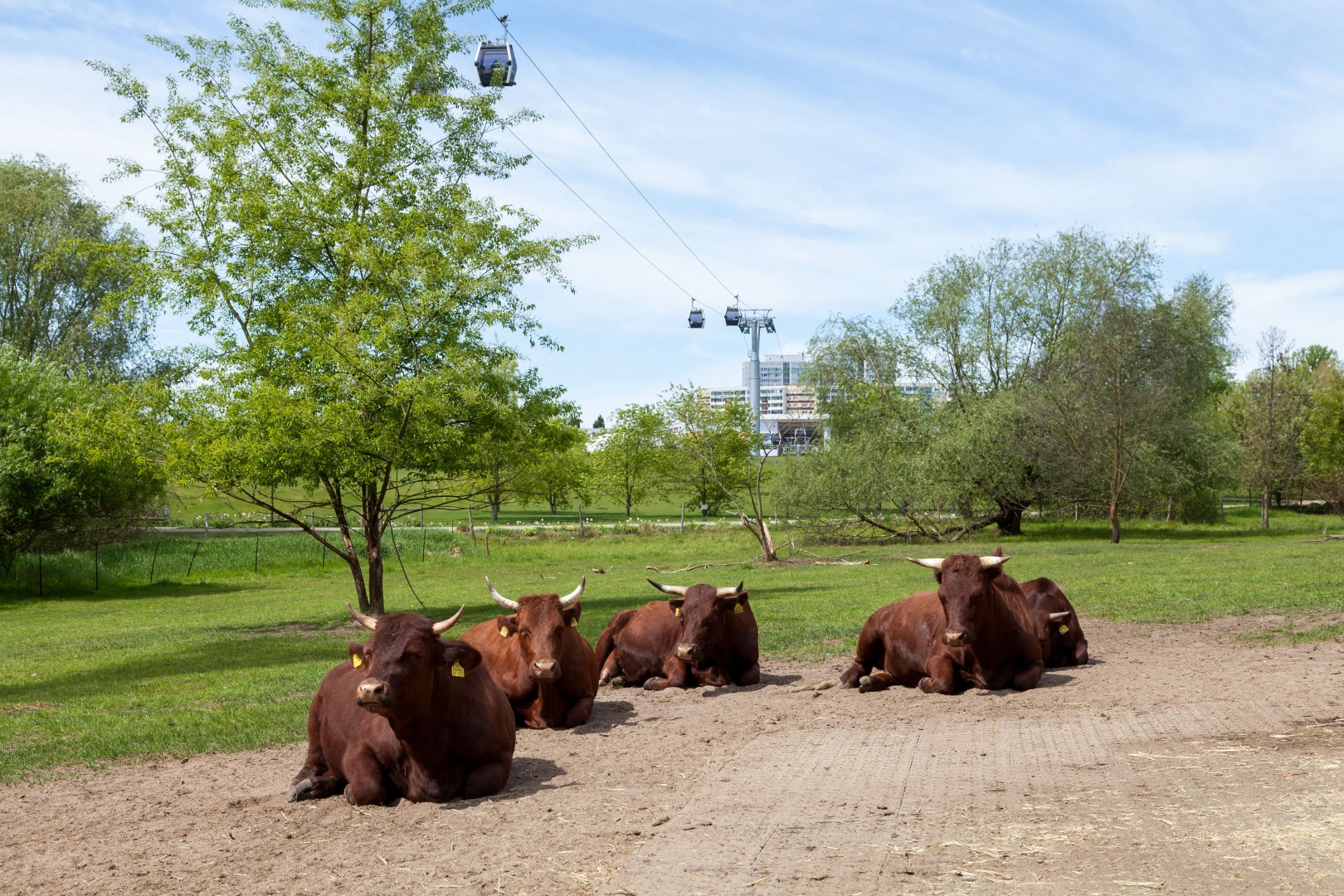
© Grün Berlin
Our animals

© Lichtschwärmer
Coburg fox sheep
The Coburg fox sheep breed originates from the low mountain ranges and is an old land sheep breed. Originally, there were many different breeds of fox sheep, which were combined into the Coburg fox sheep breed in 1966 because their populations were too small. The Coburg fox sheep is a medium sized, hornless sheep with golden yellow to reddish brown head and legs and a golden shimmering beige-blond wool fleece, well suited for landscape maintenance. Due to the barren region of its origin, it is very undemanding, hardy and a good forager. The animals have long lifespans, good maternal characteristics and are highly fertile. About 80% of pregnancies are twins.

© Lichtschwärmer
Skudde
Skudde represent the smallest German sheep breed and originate from East Prussia and the Baltic States. The breed faced extinction after the Second World War and could be preserved in Germany only by a small breeding stock in the Hellabrunn Zoo (Munich). There are white, brown and black. Only the bucks are horned. The Skudde is tough, robust, undemanding and a very good feed utiliser, which makes it very suitable for year-round grazing and landscape management. Twins are born in 30% of pregnancies.

© Lichtschwärmer
Dülmen horses
The Dülmen breed presumably originated from the crossing of runaway domestic horses and wild horses in Westphalia. The first documented mention of this breed is dated 1316. The breed was preserved through the efforts of Duke of Croy, who obtained 400 hectares of "wild" land in the Merfelder Bruch, where the breed could survive.
Today, a distinction is made between the Dülmen wild horses from the Duke of Croy's wild stock, and the Dülmens that are kept and bred in private hands. Dülmens can be either black, brown and mousy coloured. They are extremely robust, weather hardy and good feed converters. Dülmen horses are excellent for year-round grazing due to their great hardiness. During the summer and autumn, the animals develop a good layer of fat and a thick winter coat, which protects and insulates them from the elements during the winter.
Currently, you can admire three horses on the grazing areas. Our three mares are all mousy and go by the names Natascha, Missa and Nell (as of: February 2019).
Today, a distinction is made between the Dülmen wild horses from the Duke of Croy's wild stock, and the Dülmens that are kept and bred in private hands. Dülmens can be either black, brown and mousy coloured. They are extremely robust, weather hardy and good feed converters. Dülmen horses are excellent for year-round grazing due to their great hardiness. During the summer and autumn, the animals develop a good layer of fat and a thick winter coat, which protects and insulates them from the elements during the winter.
Currently, you can admire three horses on the grazing areas. Our three mares are all mousy and go by the names Natascha, Missa and Nell (as of: February 2019).

© Lichtschwärmer
Red Highland cattle
Red Highland cattle originated in central Germany and represent a classic three-use cattle: dairy, meat and pulling power. With the restructuring and mechanisation of agriculture after World War II, the breed was increasingly displaced by breeds with higher milk yields and was on the verge of extinction.
Their rescue came with the accidental finding of "forgotten" cryogenically frozen sperm portions of the pure-bred Red Cattle bull "Uwe" in an insemination station, by means of which breeding could be continued.
Red Highland cattle are rather small, very robust, vital and frugal. The animals are good feed converters and have good mothering qualities. Due to their hardiness, red Highland cattle are very well suited for year-round grazing. During the summer and autumn, the animals develop a good layer of fat and a thick winter coat, which protects and insulates them from the elements during the winter.
Currently, you can observe 5 cows with us: Orka with her daughters Orlana (* 2016) and Osha (*2017), and Bonita with her daughter Brienne (*2016).
Their rescue came with the accidental finding of "forgotten" cryogenically frozen sperm portions of the pure-bred Red Cattle bull "Uwe" in an insemination station, by means of which breeding could be continued.
Red Highland cattle are rather small, very robust, vital and frugal. The animals are good feed converters and have good mothering qualities. Due to their hardiness, red Highland cattle are very well suited for year-round grazing. During the summer and autumn, the animals develop a good layer of fat and a thick winter coat, which protects and insulates them from the elements during the winter.
Currently, you can observe 5 cows with us: Orka with her daughters Orlana (* 2016) and Osha (*2017), and Bonita with her daughter Brienne (*2016).

© Grün Berlin
Dark bee
The dark bee is a honey bee that was originally native to central and northern Europe. Today, it is extremely endangered in Germany and only a few regions exist throughout Europe where the dark bee is preserved. The dark bee is characterised by its robustness, cold tolerance, long flight distances and pronounced pollen collecting instinct.
Our dark bee colonies do not live on site, but with their breeder in Brandenburg. This is due to the high colony density in the Berlin area and the fact that undesirable crossbreeding in neighbouring colonies can hardly be prevented.
Our dark bee colonies do not live on site, but with their breeder in Brandenburg. This is due to the high colony density in the Berlin area and the fact that undesirable crossbreeding in neighbouring colonies can hardly be prevented.